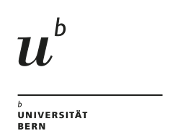How motivation influence physical activity engagement among active older adults? The contribution of identity and habit
DOI:
https://doi.org/10.36950/2025.10ciss003Abstract
Objective: Using a moderated mediation model, the present study investigated whether the mediation of physical activity (PA) habit into PA level via PA identity depends on the levels of both autonomous and controlled motivation among active older adults.
Method: A one-month prospective study was conducted among 220 French physically active older adults. They were administrated measures of sociodemographic variables, self-determination, habit, and identity at baseline as
well as PA level one month later.
Results: PA identity partially mediated the positive relationship between PA habit and PA level. In addition, moderated mediation analysis revealed that PA identity and the interaction between habit and motivation were positively and significantly associated with PA level. More precisely, PA habit was related to PA level only for older adults with both high level of controlled motivation and moderated or high level of autonomous motivation.
Conclusion: The results highlighted the crucial role of PA identity in the prediction of PA level among physically active older adults. They also revealed the importance to consider various types of motivations in the maintenance of PA.
Additional Files
Published
Issue
Section
License
Copyright (c) 2025 Johan Caudroit, Julie Boiché, Marine Vigneron, Paquito Bernard

This work is licensed under a Creative Commons Attribution 4.0 International License.


